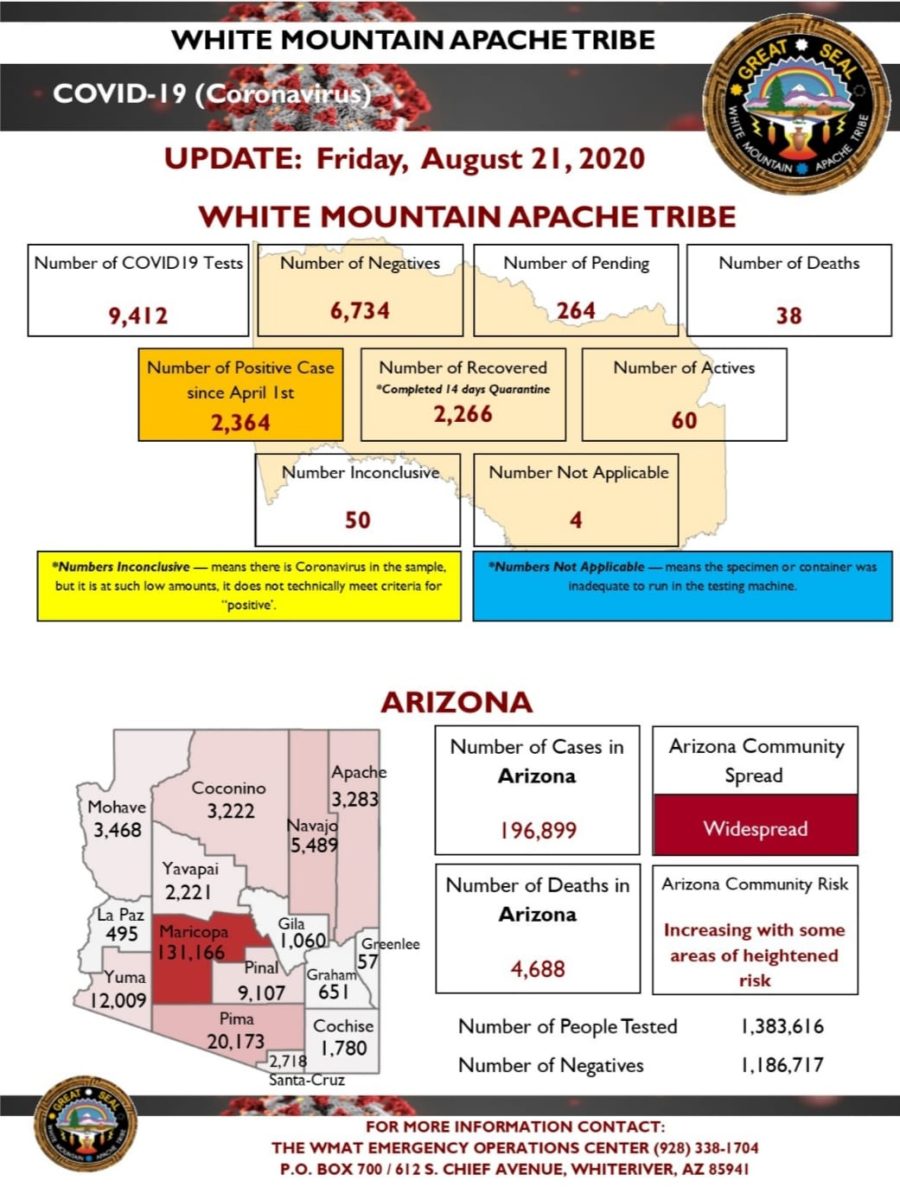When the Indian Health Service medical team arrived in Whiteriver, Arizona, the population of the White Mountain Apache Tribe was facing a level of contagion ten times higher than the state’s average. The long distances between homes in this isolated territory was becoming a challenge to be able to control the pandemic effectively.
The medical team decided to use a basic tool of epidemiology, contact tracing. The Whiteriver Indian Hospital it’s a small institution serving a population of over 18,000 people in a challenging geographic region. In those rural areas, it is common to find extended families, eight or more people living together in two-bedroom houses. An attempt was made to install tents outside the houses, to isolate the sick, but sharing bathrooms and eating utensils increased contagion by almost 80%. The elders of the tribe live with their families, so it is common to find at least one person at increased risk of contracting COVID-19 in each home.
Medics quickly realized that people living so closely together required them to track patients who tested positive as well as anyone who tested negative but could have been exposed to the virus. Keeping a record of their health and taking preventative measures to keep them healthy became a priority. One of the main symptoms they identified was happy hypoxemia, a not well understood but common condition in patients with COVID-19 that causes dangerous rates of low oxygenation which often go unnoticed, until it is too late. For this reason, according to a New York Times article, the doctors proactively focused their efforts on locating patients with these symptoms in order to prevent unmanageable situations, due to distance and transportation difficulties as well as insufficient number of artificial respirators.

When the medical team at the Indian Health Service identified people suffering from happy hypoxemia, they tried something simple: detect it early and oxygenate patients at home. They would visit people’s homes, check their symptoms, and use one of the simplest and cheapest medical diagnostic aid devices: a pulse oximeter that measures oxygen levels and pulse and costs as little as $12.
By just paying home visits, accompanying people for a short walk through the house or the patio with an oximeter on their finger, were they able to detect hundreds of cases early, manage them with less aggressive therapies and at a lower cost. Above all, the approach created a surprising outcome. Although the Tribe has one of the highest levels of contagion, due to the work of the medical team, it has one of the lowest death rates in the state and the country.
The death rate in the United States is 3.19%, in Arizona is 2.1%, in the White Mountain Apache Tribe is 1.1%. During the entire crisis, this indigenous territory has only had 38 deaths. The number of intubated patients? One.
The Indian Health Service medical team recently released a scientific paper announcing their findings. The members of the medical team openly acknowledge the commitment and effort of the Tribal leaders, who have provided logistical and personnel needed, so that the contagion tracking system and personalized attention to patients can give the necessary results.
The Tribe’s Chairwoman Gwendena Lee-Gatewood has also led significant efforts to contain the pandemic, by maintaining strict nightly curfews and requiring people to wear masks, while at the same time providing the needed support for the community. Under her leadership, the local government has helped expand internet access and delivered Ipads to students for remote learning. It has maintained a consistent food distribution system to encourage families stay home. Currently, the community is trying to regain a certain level of normalcy, even in public schools, where they have conditioned the facilities for a possible return to classes.
Doctors conclude in their paper by saying, “Covid-19 is a novel disease in need of novel approaches. But our experience has shown that there is no substitute for providing services according to the most basic principles of medicine and public health. In our current health care system, knocking on doors and talking to patients may be the most novel approach of all.”
FOR MORE INFORMATION:
